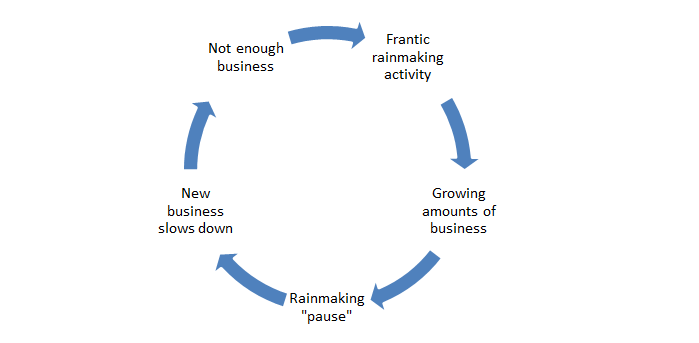Threat or opportunity? It’s all about perspective.
Most businesses do some sort of year-end review and lay plans for the next year. Many client-based businesses slow down a bit at the end of the year, and you have two choices: coast along, or use the downtime to your advantage. Surely you can guess which approach I’d advise!
When you sit down with pen and paper or cozy up with your computer, what’s the best way to look at where you’ve been this year and where you’d like to go next? Or, for those of you who are new in business, what should you be considering as you lay your plans?
You may have heard of a SWOT analysis, which stands for Strengths, Weaknesses, Opportunities, and Threats. SWOT analysis is taught in business schools and elsewhere as a model to distinguish your business from competitors. It’s a helpful model, but it’s never felt like a fit to me.
I don’t find “threat” to be a helpful concept – and it isn’t because I’m an overly optimistic Pollyanna who never sees a threat. Certainly, there are situations and circumstances out there that can pose a challenge to your business, some of which can be fatal if they’re ignored. But focusing on “threat,” in my experience, tends to call forth a defensive response, which sets up a reactive, rather than a creative, approach.
A more powerful perspective recognizes that where an obstacle exists, there’s almost always an opportunity. Sometimes it’s exploiting a particular market condition or a news story that’s put negative focus on something you or your clients are doing. That’s an opportunity to turn lemons into lemonade, meaning that the opportunity isn’t one you would necessarily seek out under other circumstances.
But sometimes spotting an obstacle leads you to recognize an opportunity that you would have dismissed as a problem. A few months ago, I was talking with a lawyer whose practice centers on family law and who wanted to work with a certain slice of the celebrity market. She’d identified a big obstacle: she wasn’t a part of the celebrity lawyer crowd. She described a group of lawyers known to one another and to that market, and even though she had many celebrity contacts, she was an outsider to that world. And there’s the opportunity. Much as politicians campaign on having the “outside the beltway” perspective, she could position herself as someone who wouldn’t have the same old, same old approach already known to others in the crowd. She could use her outsider status as a positive differentiation. Do you see it? Obstacle… Opportunity.
Another example: I worked with a consultant whose business was exploding at the seams. She had a unique process to solve a particular problem, and she had a deep connection to the community of people who were struggling with the problem. Obstacle: not enough time and energy to work with the clients beating down her door. Opportunity: she was able to raise her fees so that she could work with fewer clients one-on-one, and she certified some associate consultants in her process, so clients who couldn’t didn’t want to pay her new fees could still work with someone she’d personally trained to apply her unique process. The result? She continues to serve a large community and to help them solve their problems, but she now does so in a way that provides more income without draining her energy.
What’s your biggest obstacle? You know, the one that keeps you up at night. The one that you find yourself worrying about even when you didn’t intend to think about business.
Turn that obstacle on its head. Look for the (as yet) unappreciated opportunity that exists within it. Sometimes it’s difficult to see the opportunity if you’re too close, so ask for help from creative colleagues.

